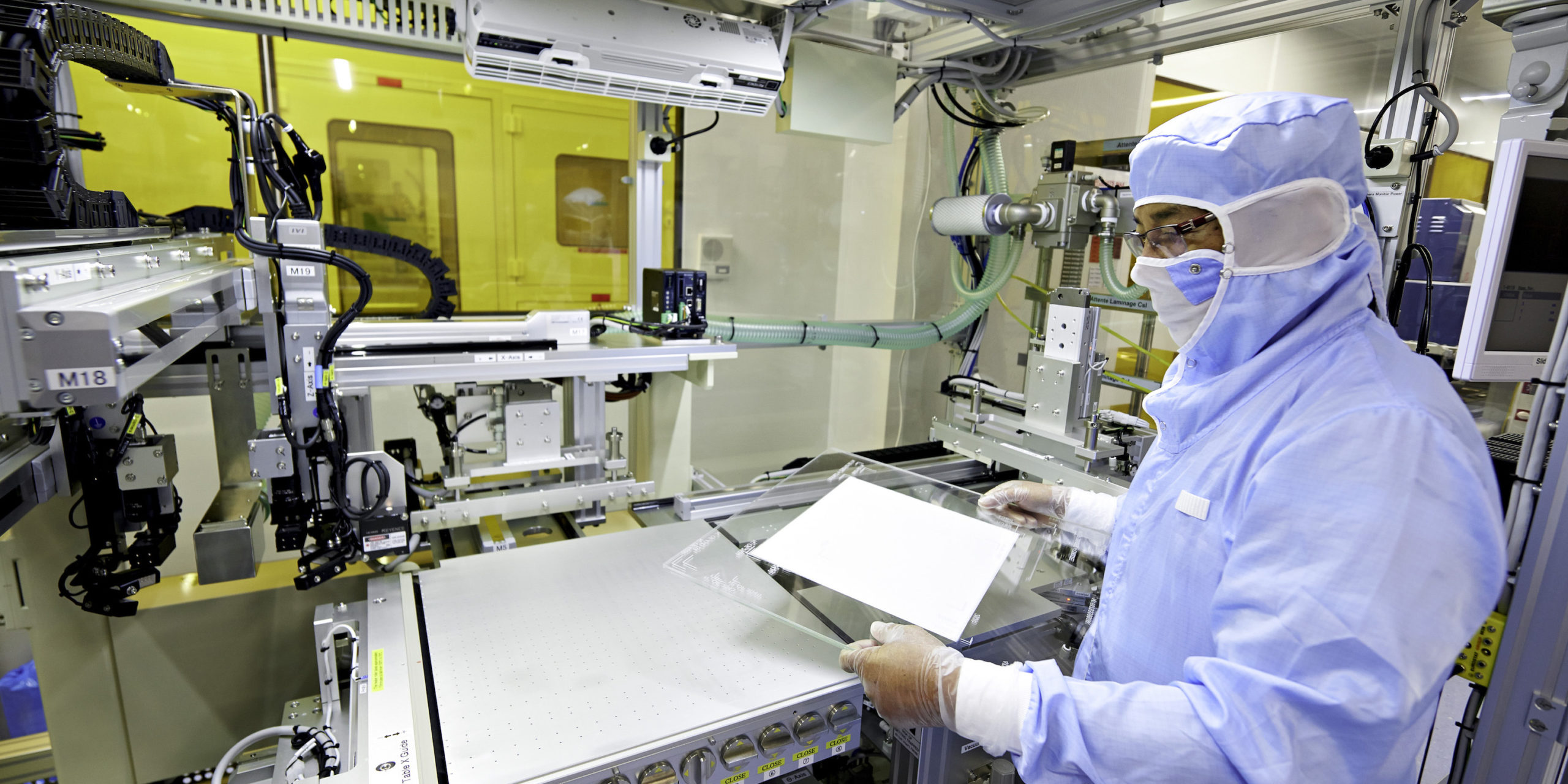
Lean leadership and Industry 4.0
RESEARCH – The authors discuss the leadership traits that Lean Thinking and the implementation of Industry 4.0 practices call for and explore their synergies.
Words: Débora Bianco, Moacir Godinho Filho, Lauro Osiro, Gilberto Miller Devós Ganga
By generating value for customers while reducing waste, Lean Thinking can help organizations to dramatically improve their competitiveness. Over the past three decades, the adoption of lean principles and techniques has spread to every industry. Essential to the success of these lean transformations is, as we now know, a deep commitment of the leadership team, which means that the development of lean leadership – and the behaviors, skills and capabilities it calls for – becomes pivotal.
In recent years, manufacturing companies have had to deal with increasing complexity and customer requirements. Increased international competition and market volatility, coupled with customers expecting every more highly customized products, present huge challenges to these organizations – in terms of costs, flexibility, adaptability, stability and sustainability.
In a bid to meet these challenges headfirst, a team of leading thinkers tasked with developing a high-tech strategy for the German government came up with the concept of Fourth Industrial Revolution – or Industry 4.0. In 2018, Schwab defined Industry 4.0 as a set of ongoing and impending transformations in the systems that surround us.
Industry 4.0 is a new chapter in human development – on par with the first, second, and third industrial revolutions – once again driven by the increasing availability and interaction of a set of unique technologies. Industry is facing an era of significant transformations and leaders will need to develop a very specific stance and develop specific skills if they are to facilitate innovation and let it take the lead.
The integration of lean manufacturing and Industry 4.0 has been a recent topic of discussion among scholars and practitioners of both approaches. A number of studies have showed the synergy between lean tools and Industry 4.0 technologies and claim that lean leads to stable processes in which automation and digitalization can be successfully implemented. They also shed a light on the effects of Industry 4.0 technologies on lean practices and sustainable organizational performance. In this context, Lean Thinking has been seen as a facilitator for Industry 4.0.
Based on this analysis, it was concluded that smart factories encourage the promotion of lean principles and that, in turn, lean is a foundation on which to build a system that allows us to implement the changes made necessary by the coming of the Fourth Industrial Revolution.

A study developed by Bianco et al this year focuses on 18 lean leadership competencies and six Industry 4.0 leadership competencies. Its results show a clear relationship between the two sets of leadership competencies. The analysis used interpretive structural modelling (ISM) and the MICMAC approach (Matrix Cross-Reference Multiplication Applied to a Classification) to investigate the driving power and dependences of lean and Industry 4.0 leadership competencies. A structural model was elaborated, showing the hierarchy among the investigated competencies, indicating the ones that should be prioritized.
This structural model was developed based on the opinion and validation of 23 experts in both lean manufacturing and Industry 4.0. The main conclusion of the study is that lean leadership competencies can sustain the competencies that should be developed in leading engaged in Industry 4.0. Additionally, a strong synergy among the competencies from both approaches was observed. The results obtained in this study may inform the development of new leaders who will be called to work in an Industry 4.0 environment and will help them to integrate Industry 4.0 practices with Lean Thinking.
As seen in the graph, lean leadership competencies support leaders in Industry 4.0 – they occupy the lower part of the diagram. What does this mean? That before considering a transformation of the production system using emerging technologies, leaders must develop 10 lean competencies that will support this change. (In the model, they are those contained in levels I, II, and III).
The fact itself that the LC12 competency (always being present at the shop floor) is the base for all other Industry 4.0 leadership competencies corroborates what the available lean literature tells us about the need of leaders to be present at the gemba to acquire direct, in-depth knowledge of the process. With the arrival of Industry 4.0, leaders in production have experienced an increased complexity in the manufacturing process, which calls for an overhaul and improvement of the whole system. Without a deep understanding of the process and its interdependencies – which you can only really get at the gemba – change is not possible.
Level III of the diagram presents a series of lean leadership competencies that are preconditions for the development of the competency to be developed by the Industry 4.0 leader (IC6). Leaders must develop the knowledge and skills set of employees, thus contributing to the creation of a culture of experimentation and learning from which fear has been eliminated and new endeavors can be pursued with confidence.
This finding tells us that before revolutionizing the organization with the adoption of new technologies, leaders must ensure experimentation permeate the daily life of the business and shape its culture. Taking risks to learn rather than obsessing with perfection. As an essential competency of a lean leader, this competency tackles the all-important challenge of encouraging employees to solve problems without direct supervision (LC13). This skill is critical for those who will be working in a technological environment.
In the model, competency IC6 is the base of the fifth level in the structural model. Promoting and spreading the experimentation and risk-taking culture (IC6) will prepare people for their interaction with new technologies (IC4), which in turn will give them autonomy and empowerment (IC5). These competencies are focused on employee development and preparedness in continuously changing environments, contributing to more sustainable innovation in the long term. Which is of course key in Industry 4.0. Training and continuous professional development are, therefore, crucial to the success of a digital transformation in its early stages. Industry 4.0 requires the workforce to possess a high degree of knowledge and dexterity.
Although the competencies of lean leaders represent the basis for the development of the Industry 4.0 leadership competencies, in the structural model we also found that the opposite is true. Indeed, some Industry 4.0 leadership competencies can significantly influence a lean transformation. Lean leaders stimulate employees to solve problems autonomously. As they start learning from their mistakes and seek different solutions on their own, they become more empowered and willing to try things out.
Some lean leadership skills are positioned high up in the model, at Level V (specifically, LC6, LC7, LC8 and LC17). They are connected to the need of keeping employees – and, indeed, the whole organization – motivated and fluent in lean principles, always aiming for continuous individual development and eliminating barriers to change as they appear. These competencies embody the importance of understanding that lean is a continuous improvement effort and not just a few projects with a beginning and an end. And aren’t we used in the Lean Community and literature to say that lean is a never-ending journey?
These four skills play an important role in shaping the future steps of a lean journey and expanding its reach the whole organization and supply chain (LC18 and LC9, shown on level VI in the model). Interestingly, LC6, LC7, LC8 and LC17 are also crucial to Industry 4.0 competencies shown at levels VI and VII (skills here have a high dependence power).
The model says it clearly: mature leaders are well versed in lean principles. Moreover, they must be prepared to assume the responsibility of impacting the organization and society with the emerging technologies they deploy. The Industry 4.0 competencies at level VI – IC2 and IC3 – speak to the need of implementing technology only when it brings advantages to the production process. One role of a leader is to design systems that leverage new technologies to give people freedom and control of their own lives. The IC2 competency (be analytic when allowing the implementation of advanced technologies) is particularly critical.
The last level of the structural model (VII) is composed of only one competency from Industry 4.0: implement technologies to promote the organization’s business model (IC1). This shows that the implementation of Industry 4.0 technologies requires the business to be prepared and employees to support change.
TO CONCLUDE
This model makes it clear that the competencies typical of a lean leader will sustain Industry 4.0 practices and facilitate innovation.
There is no doubt that Industry 4.0 will bring dramatic changes to the production systems around the world, impacting leaders, employees, whole business, even society. This study suggests that leaders must develop specific competencies to really tap into the potential of new technologies and make the lives of employees easier. We hope that leaders will find this structural model of help as they try to adopt strategies and practices related to Industry 4.0. A leader called to act in a tech-heavy environment must develop a specific set of competencies to fully prepare for the Fourth Industrial Revolution: our model highlights the importance of lean skills in this all-important process. Without lean, the promise of Industry 4.0 won’t be entirely fulfilled.
THE AUTHORS
Débora Bianco, Industrial Engineering Department, Federal University of Sao Carlos, Brazil.
Moacir Godinho Filho, Industrial Engineering Department, Federal University of Sao Carlos, Brazil.
Lauro Osiro, Institute of Technological and Exact Sciences, UFTM.
Gilberto Miller Devós Ganga, Industrial Engineering Department, Federal University of Sao Carlos, Brazil.
Read more


FEATURE – The continuous flow of developing people’s capabilities throughout their studies and careers is lacking, to say the least. It’s time we saw this as one big value chain.


FEATURE - In the second article in his series, the author provides helpful tips for those interesting in bringing some Lean Thinking to their parenting, focusing on the first five years of a child's life.


INTERVIEW – By making lean its way of thinking and acting, a hospital in Porto Alegre, Brazil was able to dramatically improve patient flow and transform its culture.


NOTES FROM THE GEMBA – A culture in which problems are tackled as soon as they appear and the production and product development teams work closely together is helping this French healthcare technology company to thrive.

